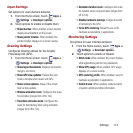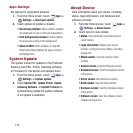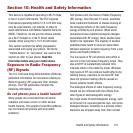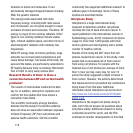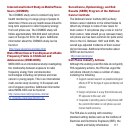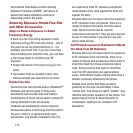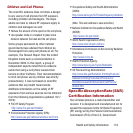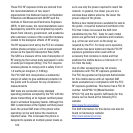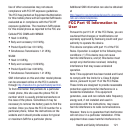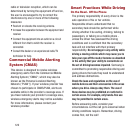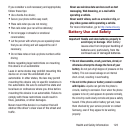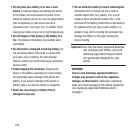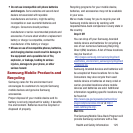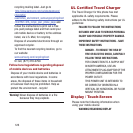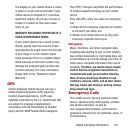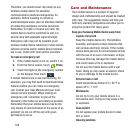
Health and Safety Information 121
Use of other accessories may not ensure
compliance with FCC RF exposure guidelines.
The FCC has granted an Equipment Authorization
for this mobile phone with all reported SAR levels
evaluated as in compliance with the FCC RF
exposure guidelines. The maximum SAR values
for this model phone as reported to the FCC are:
Cellular/PCS CDMA with WIMAX:
•
Head: 0.40 W/Kg.
•
Body-worn accessory: 0.61 W/Kg.
•
Product Specific Use: 0.61 W/Kg.
•
Simultaneous Transmissions: 1.21 W/Kg.
WLAN:
•
Head: 0.10 W/Kg.
•
Body-worn accessory: 0.09 W/Kg.
•
Product Specific Use: 0.08 W/Kg.
•
Simultaneous Transmissions: 1.21 W/Kg.
SAR information on this and other model phones
can be accessed online on the FCC's website
through
http://transition.fcc.gov/oet/rfsafety/sar.html
.
To find information that pertains to a particular
model phone, this site uses the phone FCC ID
number which is usually printed somewhere on
the case of the phone. Sometimes it may be
necessary to remove the battery pack to find the
number. Once you have the FCC ID number for a
particular phone, follow the instructions on the
website and it should provide values for typical
or maximum SAR for a particular phone.
Additional SAR information can also be obtained
at
http://www.fcc.gov/encyclopedia/specific-absorption-
rate-sar-cellular-telephones
.
FCC Part 15 Information to
User
Pursuant to part 15.21 of the FCC Rules, you are
cautioned that changes or modifications not
expressly approved by Samsung could void your
authority to operate the device.
This device complies with part 15 of the FCC
Rules. Operation is subject to the following two
conditions: (1) This device may not cause
harmful interference, and (2) this device must
accept any interference received, including
interference that may cause undesired
operation.
Note: This equipment has been tested and found
to comply with the limits for a Class B digital
device, pursuant to part 15 of the FCC Rules.
These limits are designed to provide reasonable
protection against harmful interference in a
residential installation. This equipment
generates, uses and can radiate radio frequency
energy and, if not installed and used in
accordance with the instructions, may cause
harmful interference to radio communications.
However, there is no guarantee that interference
will not occur in a particular installation. If this
equipment does cause harmful interference to



